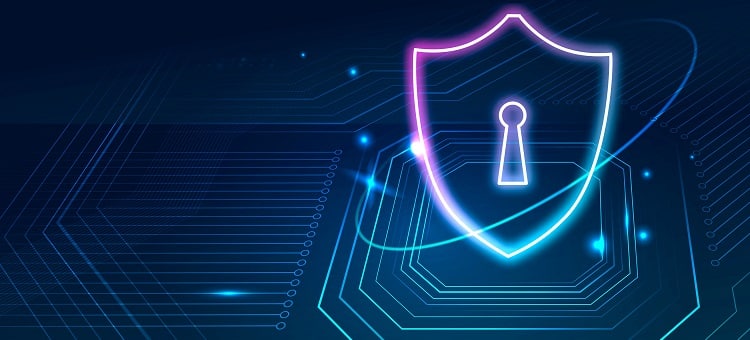Cybercrimes are not just high-profile security breaches or the attacks we see in movies. Small businesses are as affected by cybercrimes as large-scale organizations. According to the 2022 cyber security statistics, cybercrimes attack 71.1 million people annually, and 50% of these victims are small business owners.
It’s high time you stopped thinking there’s not too much to steal. Security risks are real and can be serious. To mitigate these risks, you need an IT help desk provider to build a robust cybersecurity policy for your organization.
Also called information policy, a cybersecurity plan shows your company’s security policy and specifies the methods to protect your company’s assets, including confidential data. Simply put, it’s a tool that preserves your employees, assets, and database and maintains business integrity.
Each user of the network across all departments in an organization must abide by the cybersecurity policy. Failure to comply with the security rules can put the company at a greater risk of getting attacked.
6 Key Elements of a Cybersecurity Plan
A comprehensive security plan covers various elements. Let’s check out a list of the things included in a cybersecurity policy.
1. Security Goals
All security policies start with defined goals. And while the common goal for most businesses is to secure their digital operations and data, the purpose of implementing a security policy goes beyond that.
Your goal can be:
- To improve your reputation in the market by implementing robust cybersecurity practices.
- To comply with ethical and legal standards.
- To follow a proactive approach in securing your company’s assets.
- To respond to your client’s queries and complaints about data security and your business’ legal compliance.
Without a purpose, a business can never create an effective, detailed cybersecurity plan. Another reason for listing goals is to ensure they align with the company’s corporate strategy.
Once you know the purpose, you can start writing a cybersecurity policy.
2. Access Control Policy
Authorization access is the most crucial element of any cybersecurity plan. This section covers which members in your organization have the right to accept or decline authorization requests or who can establish the access control rules.
Some companies can’t decide on shareable information. For example, healthcare industries must comply with HIPAA requirements when disclosing patients’ private information.
Ideally, your company hierarchy will help you establish the control access policy. Those in the lower-level group don’t know much about security and privacy, so they shouldn’t be allowed to share any information. The access control policy should also define the level of control an individual has over information sharing.
Consider adding a monitoring tool that captures all login attempts from your internal and external members. It must record the date and time of login, identify the user, the number of failed login attempts, etc. You should also define the authentication requirements—the IDs, your employees need for accessing restricted areas of your business.
3. Data Classification
The next vital element in your cybersecurity plan is data classification. You can set up a hierarchy that shows the data categorized by the level of security. For example, the most confidential, sensitive data, public data, and so on.
For instance, the data on the first level can be disclosed to the public, while the same on the fourth and fifth levels can harm your organization and the clients if the public gets access to it. This form of data requires stringent security. This includes high-risk data, such as your clients’ financial data, patients’ confidential information, employees’ payroll, etc.
4. Data Protection
You must work with IT professionals at the after hours call center to establish the measures you will take to protect your data in the event of a breach or an attempted attack. Here’s what a data protection section covers:
- Data Protection Tools: Every business requires a set of security protocols and tools to prevent unauthorized access to their network. Examples are a firewall, a malware protection program, two-factor authentication, and an IT help desk company for incident management.
- Data Backup: Restoring the data can be very tricky and time-consuming when your network shuts down. A data backup policy ensures that your data is securely stored in the cloud and can be retrieved when required.
- Data Transfer: Data breaches can occur when you are transferring data to unsecured networks or using public networks to access the organization’s data. Encrypt the data you copy to other devices.
5. Security Awareness
Your staff needs to stay informed about the latest data security policies, sensitive data classification, and data protection regulations. Building a stringent cybersecurity plan won’t be enough. You want your employees to understand the policy and comply with it.
Start with social engineering attacks. As these have become a common way of accessing a company’s confidential data, your employees must be aware of email phishing and how to prevent that. You may also need to restrict your staff’s access to unauthorized websites. Clarify the internet use policy and clearly mention which sites/apps shouldn’t be used when employees use the company’s network.
Your company must follow a clean desk policy. Ask your employees to leave unsecured data and private information out of the desk or easily accessible areas.
6. Responsibilities and Rights of Personnel
The last element of your cybersecurity plan outlines the rights of your team toward cybersecurity. Each employee should be designated some responsibility regarding data protection.
For instance, the top-tier groups can educate the workers about the company’s asset protection, while your IT help desk should be responsible for incident management, change implementation, software updates, threat detection, etc.
The cybersecurity plan must list the employees’ responsibilities and authorization rights clearly. They should know which data they are authorized to access, edit, and share.
Bottom Line
Your job doesn’t end with developing a security policy. Take some time to review it occasionally and update the plans as and when required. It should be flexible enough to accommodate changes in your organization. An outsourced IT help desk service can help if you have difficulty writing a detailed cybersecurity policy. They will reduce your workload by developing a robust cybersecurity plan and implementing modern security protocols.







